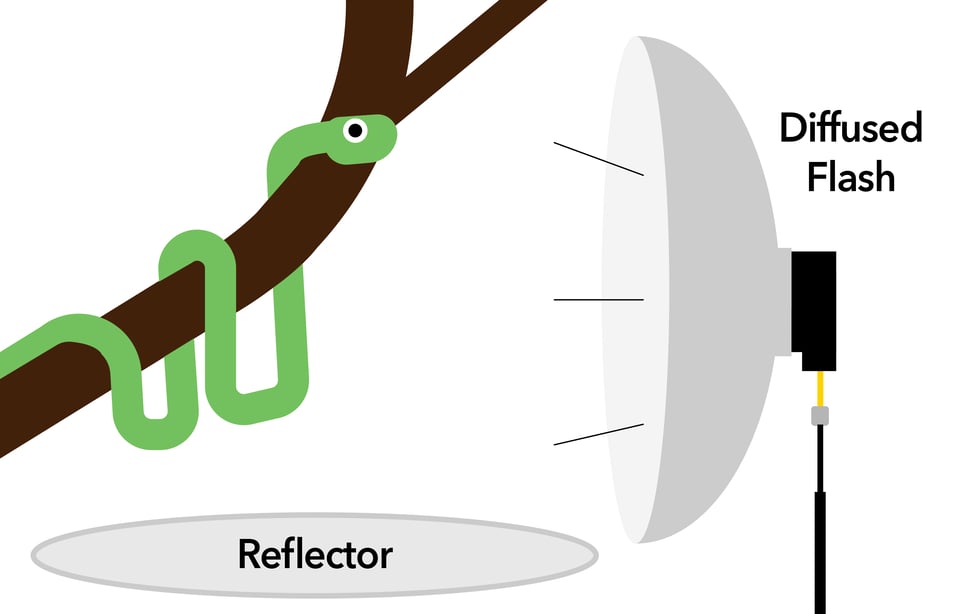Portable flashes offer incredible versatility for photographers on the go. They’re lightweight, powerful, and surprisingly capable of producing stunning, professional-quality lighting setups. Forget lugging around heavy studio strobes; these little powerhouses can transform any location into your personal photography studio. This article dives into five creative lighting setups you can achieve with portable flashes, exploring each technique in detail and offering practical tips to help you master them.
1. The Classic Rembrandt Lighting Setup
Rembrandt lighting, characterized by a small triangle of light on the cheek opposite the main light source, remains a timeless portraiture classic. Achieving this with a portable flash is surprisingly easy. Position your flash off-camera at approximately a 45-degree angle and slightly higher than your subject’s eye level. Use a reflector or a second, less powerful flash on the opposite side to fill in the shadows and prevent overly harsh contrasts. Experiment with the distance between the flash and your subject to fine-tune the size and intensity of the light triangle. A diffuser on your main flash softens the light, creating a more flattering result.
Pro Tip: A small, inexpensive shoot-through umbrella can act as a diffuser, softening the light and creating a more pleasing, less harsh effect. Experiment with different distances to control the fall-off of light.
2. Split Lighting: Dramatic and Defined

Split lighting dramatically divides the subject’s face, with one half in light and the other in shadow. This creates a strong, edgy look perfect for portraits that convey power or mystery. To achieve this, position your main flash directly to one side of your subject, ensuring it’s at roughly the same height as their face. No fill light is needed for a true split lighting effect; the deep shadows add to its dramatic impact. You can use a reflector to bounce a bit of light back, if you wish, to control the shadow intensity.
Pro Tip: Experiment with posing your subject to maximize the effect. Turning their head slightly can significantly alter the shadow patterns, allowing you to fine-tune the drama.
3. Butterfly Lighting: Elegant and Classic

Butterfly lighting, also known as Paramount lighting, places the main light source directly in front of and slightly above your subject, creating a butterfly-shaped shadow under their nose. This technique is flattering for most subjects and produces a soft, elegant look. Position your flash directly in front and slightly above your subject, possibly using a small reflector to fill the shadows subtly. You may need to use a diffuser to prevent harsh light. A softbox on your speedlight would add even more smoothness.
Pro Tip: The height of your flash is critical for achieving the characteristic butterfly shadow. Experiment with slight adjustments to find the perfect placement.
4. Loop Lighting: A Versatile Choice

Loop lighting is a versatile technique that creates a small loop of light under the subject’s cheekbone on the side facing the light source. It’s a good balance between dramatic and flattering, offering a more dynamic look than butterfly lighting but softer than split lighting. Position the flash off-camera at approximately a 30-45 degree angle and slightly above the subject’s eye level. The key is to ensure the light wraps around the subject’s face, creating the signature loop of light.
Pro Tip: A slightly lower flash position might be necessary depending on the subject’s facial structure. Adjust the height and angle to fine-tune the loop shadow.
5. Using Multiple Flashes for Creative Control

Don’t limit yourself to a single flash! Multiple flashes open up a world of creative possibilities. Consider using one flash as your key light, another as a fill light, and a third as a hair light or background light. Experiment with different positions, intensities, and colors to create complex and dramatic scenes. A background light can separate the subject from the background, while hair light adds a highlight to the subject’s hair, enhancing dimensionality.
Pro Tip: Use radio triggers to control multiple flashes simultaneously and avoid the complexities of complicated sync cords. This adds a lot more flexibility to your lighting set up, especially if you have assistants to help position the lights.
Essential Accessories for Portable Flash Photography
To truly maximize your creative potential with portable flashes, consider investing in some key accessories:
- Diffusers: Soften the harsh light from your flash.
- Reflectors: Fill in shadows and add brightness.
- Radio Triggers: Control multiple flashes wirelessly.
- Light Stands: Position your flashes precisely.
- Umbrellas: Act as both diffusers and reflectors.
- Softboxes: Create a softer, more even light spread.
Portable flashes are an incredibly powerful and versatile tool for photographers of all skill levels. By mastering these five lighting setups and experimenting with different accessories, you can create stunning images in almost any environment. So grab your flashes, explore these techniques, and unleash your creative potential!